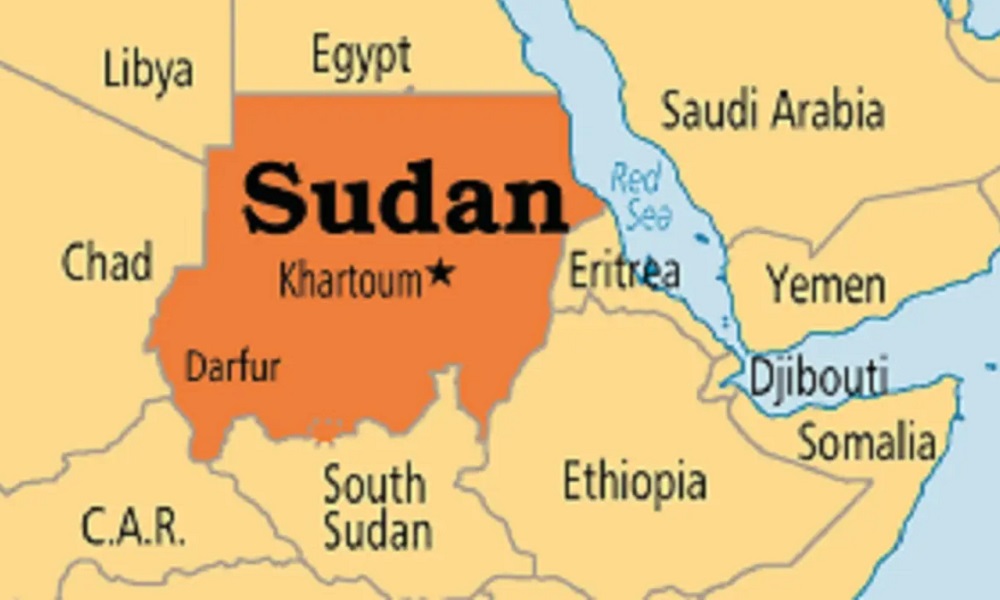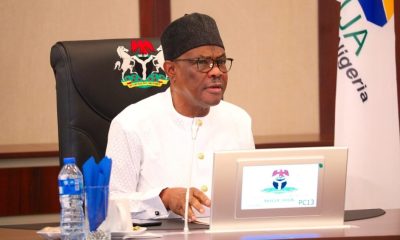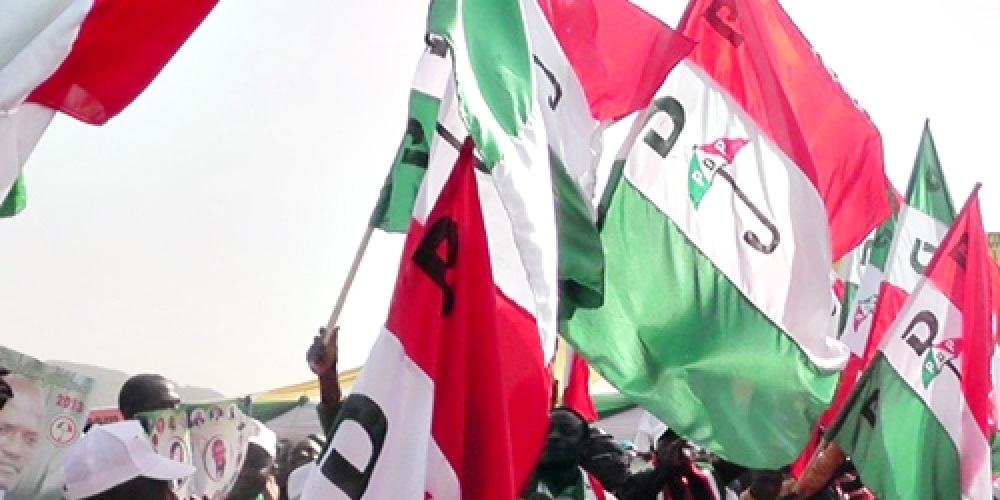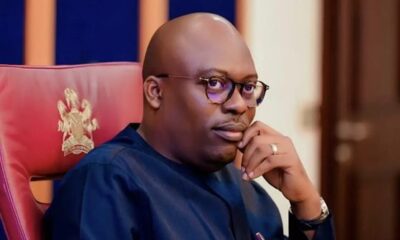Foreign
“Enlist or die”: How Sudan’s paramilitary withholds food to forcibly enlist men and boys

In mid-December, the powerful paramilitary Rapid Support Forces (RSF) swept into Sudan’s central Al Jazira state, known as the country’s breadbasket, with an ultimatum: “Enlist or die.”
Since then, the militia group has sought to use food as a weapon, withholding supplies from the hungry in a bid to coerce men and boys to join its ranks, according to over three dozen witnesses.
The RSF has been battling the Sudanese Armed Forces (SAF) for control of the country since a civil war broke out between the two rival factions in April last year. Both forces have been accused of killing civilians.
Now, a CNN investigation led by CNN Chief International Investigative Correspondent Nima Elbagir has found that almost 700 men and 65 children have been forcibly recruited by the RSF over the past three months in Jazira state alone.
Many of the victims were identified by witnesses, survivors, and family members. CNN cross-checked their names with residents from their communities to get details of what happened in each case.
CNN was independently able to corroborate the identities of all 750 people swept up by the RSF press gangs in Jazira. Of those, at least 600, including 50 boys under 18, joined the RSF in eastern Jazira, in many cases driven by hunger, witness testimonies revealed. Another 150, including 15 boys, were forcibly recruited in western Jazira. Many of the men previously worked as farmers or traders.
The RSF campaign unfolded in Sudan’s agricultural heartland during its peak cultivation and harvest period, exacerbating food insecurity in a country already on the brink of famine.
Eyewitnesses detailed a range of coercive methods employed by the RSF to compel individuals to join their ranks, including intimidation, torture, summary execution and the withholding of food and medical aid.
RSF soldiers looking to swell the militia’s ranks targeted one village on February 27, witnesses said.
The militia tried to recruit 20 young men from the village, eyewitnesses, survivors and families of victims said. When the residents refused, they set up a base in the village, unleashing what the witnesses described as a campaign of terror. Homes were looted, and supermarkets and food warehouses were set on fire before the soldiers took off with over 30 stolen vehicles.
The three dozen eyewitnesses CNN spoke with from across Jazira, including survivors and the families of victims, say refusing the RSF’s ultimatum comes at the cost of food, home and safety. CNN is not naming the villages and most of the people who spoke due to fear of RSF reprisals.
The RSF has yet to respond to CNN’s request for comment on this story.
Foreign
Why Popes Change Their Name and What Is the Significance of Leo XIV

The world watched as white smoke rose from the Sistine Chapel, signaling the election of a new pope: Cardinal Robert Francis Prevost, now known as Pope Leo XIV. While the ceremonial elements of his ascension were rich in tradition, one symbolic gesture stood out—the choice of his papal name.
The decision to adopt a new name upon becoming pope is far more than a formality. It is a profound act rooted in centuries of Catholic history, carrying theological, historical, and pastoral significance. As the Church welcomes its new leader, attention turns to the name Leo XIV, and what it could mean for the future of global Catholicism.
Why Do Popes Change Their Names?
Though not mandated by Church law, changing one’s name upon papal election has become a long-standing tradition in the Roman Catholic Church. The practice began in 533 AD when Pope John II renounced his birth name, Mercurius, which had pagan roots.
Key reasons popes change their names:
Symbolic rebirth as the spiritual head of the Catholic Church
A chance to align with a legacy or emulate a previous pope or saint
To communicate the themes and direction of their papacy
Much like biblical figures—such as Saul becoming Paul or Simon renamed Peter—the new name represents a divine calling and transformation.
Historical Origins of Papal Name Changes
The first recorded instance of a papal name change, by Pope John II, set a precedent for future pontiffs. Over time, the tradition became entrenched as a way for popes to:
Distance themselves from controversial associations
Embrace names that resonate with spiritual reform
Adopt titles that offer reassurance during turbulent times
Fewer than 10 popes have retained their birth names. For instance, Pope Marcellus II in 1555 and Adrian VI in 1522 are rare examples who did not alter theirs.
The Significance of the Name “Leo XIV”
The newly elected pope’s decision to take the name Leo XIV is rich with meaning and draws directly from Pope Leo XIII, a pivotal figure in Church history.
Key Associations with the Name Leo:
Pope Leo I (Leo the Great): Strengthened papal authority and defended Rome from invaders
Pope Leo XIII: Known for championing social justice, workers’ rights, and engaging with the modern world through the 1891 encyclical Rerum Novarum
By aligning with this legacy, Pope Leo XIV signals an intention to:
Address global inequality and labor conditions
Tackle modern ethical dilemmas, such as artificial intelligence and climate change
Foster dialogue within the Church and across faiths
His name implies a strong, reform-driven leadership, rooted in both tradition and progress.
Who Is Pope Leo XIV?
Born Robert Francis Prevost in Chicago, USA, Pope Leo XIV is the first American pope in the history of the Catholic Church.
Background Highlights:
Born in 1955, former Augustinian priest
Served as Bishop of Chiclayo, Peru, where he advocated for indigenous rights and pastoral outreach
Most recently led the Vatican’s Dicastery for Bishops, overseeing global bishop appointments
His selection reflects a shift towards a more globally representative papacy, echoing the reach of Pope Francis, his immediate predecessor.
Are Any Papal Names Off-Limits?
While there is no official list of banned names, tradition discourages certain choices.
The name Peter II has never been used, out of reverence for Saint Peter, the first pope, and due to apocalyptic prophecies suggesting “Peter the Roman” will be the last pope.
Names associated with controversial historical figures, like Urban VIII (linked to the persecution of Galileo), are also typically avoided.
How the Name Is Announced
Following the conclave’s decision, the senior cardinal deacon appears on the central balcony of St. Peter’s Basilica to deliver the iconic Latin phrase:
“Habemus Papam – We have a pope!”
The full announcement includes:
The pope’s baptismal name, translated into Latin
His newly chosen papal name
The traditional final word: “Franciscum” (or the new name, in Latin)
In the case of Pope Leo XIV:
“Robert Francis Prevost” was presented in Latin as Robertum Franciscum
His papal name was announced as Leo Quartus Decimus

Some names carry more weight due to frequent use and historic success:
Papal Name Number of Popes
John 21
Gregory 16
Benedict 15
Leo 14 (with Leo XIV)
Innocent 13
The name Francis, chosen uniquely in 2013, marked the first usage in papal history, breaking a pattern that had lasted over 1,000 years.
What This Means for the Church
Pope Leo XIV is expected to prioritize:
Social justice and protection of the poor
Ethical debates around technology and artificial intelligence
Greater involvement of the Global South in Church leadership
Environmental stewardship and climate action
His papacy begins at a time of profound challenge and transformation for the Church, and his name hints at a bold, reformist agenda balanced by theological consistency.
Conclusion: A Name That Signals Direction
The name Leo XIV is more than a formality—it’s a powerful declaration of intention, alignment, and inspiration. As Pope Leo XIV steps into one of the world’s most influential spiritual roles, his choice pays homage to the Church’s past while casting a hopeful vision for its future.
From American roots to global responsibilities, his leadership may well define Catholicism’s engagement with the modern world for decades to come.
Foreign
Pope Leo XIV, celebrates first Mass, wants Church to be beacon of light

Pope Leo XIV celebrated his first Mass on Friday in the Sistine Chapel where he was elected less than 24 hours earlier, warning of the dangers caused by a lack of faith and hoping the Catholic Church could be a beacon lighting the world’s “dark nights”.
Leo, the former Cardinal Robert Prevost and the first U.S. pope, looked calm as he delivered the Mass in the famous, frescoed chapel with the same cardinals who chose him to be the 267th pontiff and the successor to Pope Francis.
Dressed in relatively simple white and gold vestments, Leo, who was born in Chicago but spent two decades as a missionary in Peru, said a few words in English before continuing his homily in fluent Italian.
In the homily, Leo, 69, painted a picture of the Church he would like to see, saying he would seek to serve as the “faithful administrator” for the Church as a whole.
The new pope, who leads 1.4 billion Catholics around the world, acknowledged that the Christian faith is sometimes “considered absurd” and the preserve of “the weak and unintelligent”.
“A lack of faith is often tragically accompanied by the loss of meaning in life, the neglect of mercy, appalling violations of human dignity, the crisis of the family and so many other wounds that afflict our society,” he said.
MAY 18 INAUGURATION
An inauguration Mass for Leo will be held in St. Peter’s Square on Sunday May 18, the Vatican said.
World and religious leaders are invited to the inauguration, which marks the formal launch of a papacy. Pope Francis’ inauguration in 2013 attracted a crowd estimated at 200,000 people.
The new pope will also leave senior Vatican officials in their roles for the time being, giving him time to decide before making definitive appointments, the Vatican said.
All Vatican senior officials, appointed for five-year terms, serve at the pleasure of the pope. A new pontiff usually rolls over existing mandates at least initially before deciding whether to change key positions.
The pope was elected at the end of a two-day conclave that was wrapped up on Thursday evening when white smoke billowed from the chimney on the Sistine Chapel.
Item 1 of 8 Pope Leo XIV conducts Mass in the Sistine Chapel at the Vatican, May 9, 2025. Vatican Media/Simone Risoluti Handout via REUTERS
Given the nature of the conclaves, when cardinals are shut away from the world and sworn to secrecy, little or nothing is likely to emerge – at least for now – about how Leo obtained the required two-thirds majority of the vote so swiftly.
The successor to Pope Francis, who died last month at the age of 88, inherits a number of major challenges, ranging from a budget shortfall to divisions over whether the Church should be more welcoming towards the LGBT community and divorcees, and should let women play a greater role in its affairs.
He will also have a packed agenda, with the Vatican celebrating a Holy Year that brings millions of additional tourists to Rome.
THE FIRST US POPE
Before Leo’s election, U.S. cardinals had largely been written off as papal contenders because of a widespread assumption that the global Church could not be run by a superpower pope.
However, he also holds Peruvian citizenship, meaning that he has deep knowledge of both the West and less developed nations.
U.S. President Donald Trump was quick to congratulate Leo. However, the new pope has a history of criticizing Trump and Vice President JD Vance’s policies, according to posts on the X account of Robert Prevost.
Leo worked for decades in the north of Peru, first as a missionary and later as Bishop of Chiclayo from 2015 to 2023. Catholics took to the streets of the small city in northwestern Peru, and church bells rang out to celebrate the election of a man who they embrace as one of their own.
One of the clues to what kind of a Church leader Leo will be was in his choice of name. The last pope with this name was Leo XIII, who led the Church from 1878-1903. He was known for his devoted focus to social justice issues.
Prevost became a cardinal only in 2023. He has given few media interviews and is known to have a shy personality.
Francis brought him to Rome two years ago to head the Vatican office in charge of choosing which priests should serve as Catholic bishops, meaning he has had a hand in selecting many of the world’s bishops.
Foreign
Inaugural Mass of Pope Leo XIV to be held on May 18 – Vatican

The Vatican had announced that Pope Leo XIV will be inaugurated on Sunday, May 18, 2925, in St Peter’s Square.
World leaders will gather for the event which will be held 10 days after the election of Robert Francis Prevost as the first United States head of the world’s 1.4 billion Catholics.
The Vatican said the new pontiff will meet with journalists on Monday and with diplomats accredited to the Holy See the following Friday.
His first general audience will be on Wednesday May 21, 2025, and he will meet with members of the Roman Curia, top Vatican officials, on May 24, 2025.
Cardinal Robert Prevost, an American-born cleric and seasoned Vatican official, was elected Pope on Thursday, May 8, 2025, taking the name Leo XIV.
-

 News16 hours ago
News16 hours agoWho Is Usoro Akpabio? Tinubu’s New MD for South-South Development Commission
-

 News8 hours ago
News8 hours agoJust in: Wike admits Fubara alongside 2 govs visited him on reconciliatory moves
-

 Politics16 hours ago
Politics16 hours agoJust in: PDP leaders plan to grab power as govs, ex-govs meet
-

 Politics17 hours ago
Politics17 hours agoWatch moment Wike arrives for PDP meeting (Video)
-

 News12 hours ago
News12 hours agoRivers crisis: Wike’s aide mocks Fubara, advises him to honourably quit since his spirit has left Brick House
-

 News17 hours ago
News17 hours agoTrue confession: “I’m not keen to return to office my spirit has left Brick House-Fubara
-

 Economy10 hours ago
Economy10 hours agoSEE Black Market Dollar (USD) To Naira (NGN) Exchange Rate Today 12th May 2025
-

 News16 hours ago
News16 hours agoSAD! Finally, see photos, identity of army captain killed by Boko Haram






